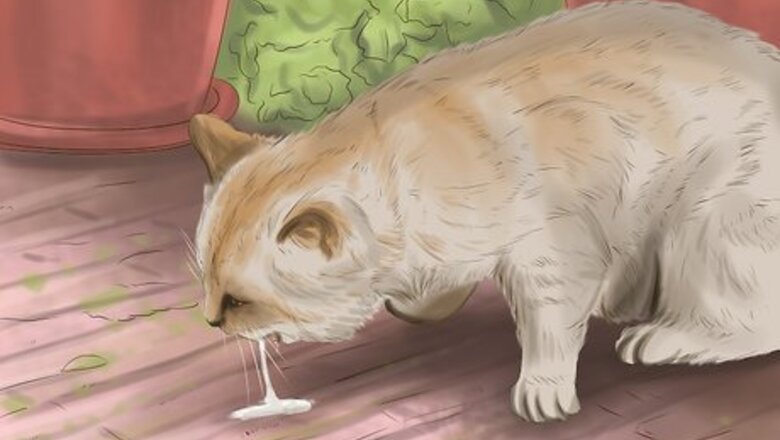
views
Helping Your Cat
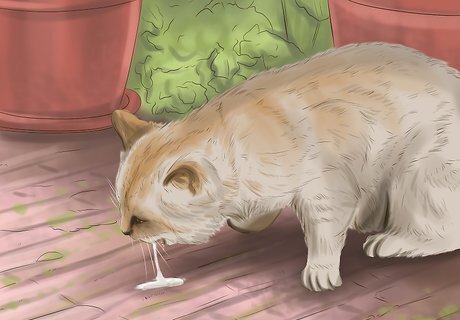
Recognize the symptoms of poisoning. A cat may be suffering from poisoning if any of the following general symptoms are observed: Difficulty in breathing Blue tongue and gums Panting Vomiting and/or diarrhea Gastric irritation Coughing and sneezing Depression Salivation Seizures, tremors or involuntary muscle twitching Weakness and potentially unconsciousness Dilated pupils Frequent urination Dark urine Shivering
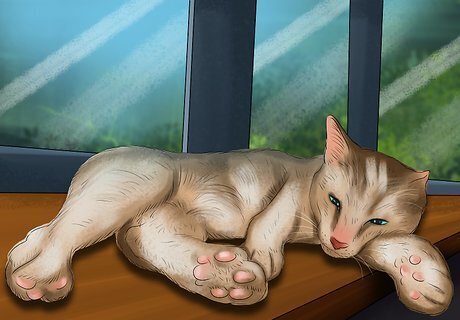
Get your cat to a well-ventilated area. When poisoning is suspected and your cat is lying down, unconscious or weak, immediately remove your cat from the area, and transfer it to a well-ventilated and well-lit place. Wear long sleeves and/or gloves to protect yourself from the poison. Sick and wounded cats are likely to bite and scratch because they are upset and afraid. When a cat feels unwell or is anxious, her first instinct is to hide. If the cat has been poisoned you will need to monitor her symptoms and so it is not appropriate to let her hole up somewhere. In a gentle but firm manner, pick the cat up and take her to a safe room. The kitchen or bathroom is ideal since you will need access to water. If the poison is within the area, cautiously remove it away from reach of any pets or humans.

Call a veterinarian immediately. An experienced vet or helpline can help you calm down and will be able to give you clear instructions on what to do or what antidote to give to your poisoned cat. Always remember that the chances of your cat surviving will be higher if you immediately call the vet. This should be the very first thing to do after stabilizing your cat. You can also call the Pet Poison Helpline (800-213-6680) or the ASPCA Poison Control Center (1-888-426-4435). Pet poison hotlines are not funded by the government like human poison hotlines are, so they usually charge a fee to help pay for the service.
Administering First Aid

Identify the poison if at all possible. This will help you decide on whether it is correct or inappropriate to make the cat vomit. If you have access to the packaging make a note of the following information: trade name, active ingredient(s), and strength. In addition, try to estimate how much the cat has consumed. (Was it a new box? How much is missing?) Your first contacts should be your vet, the pet poison hotline, and the product manufacturer. If you have access to the internet, search the active ingredient. It is helpful to phrase the search like this: Is [name of product] toxic to cats? Some products may be safe when ingested and if you find that out, you need go no further. If the substance is poisonous, the next step is to decide whether to make the cat vomit or not.
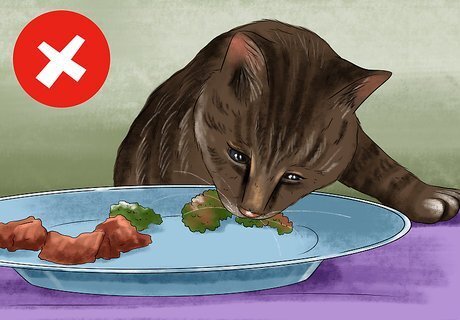
Avoid giving your cat a home remedy unless instructed. Do not give your kitty any food, water, milk, salt, oil, or any other home remedy unless you know what poison the cat ingested and the specific medication or first aid. Giving any of these without any consultation or instruction from a veterinarian or a Pet Poison Helpline may worsen the condition of your cat. The vet or the helpline will have more knowledge and skill in determining what to do or what to give your poisoned cat.
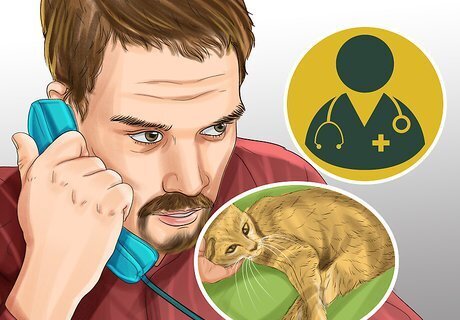
Ask the vet or poison hotline before making your cat vomit. Do not make your cat do anything without instruction from a vet or a pet poison helpline. Some poisons (particularly corrosive acids) can do more harm if vomiting is induced. Only induce emesis (sickness) if: The poison was eaten within the past two hours. If it was eaten more than two hours ago, it has already been absorbed, so vomiting is useless. The cat is conscious and able to swallow. Never give anything by mouth to an unconscious, semi-conscious, or seizing/mentally altered cat. The poison is NOT an acid, strong alkali, or petroleum product. You're 100% certain you know the poison was ingested.
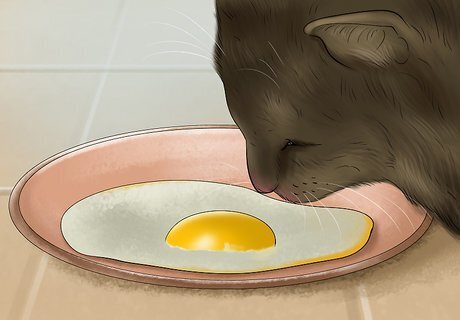
Know how to handle acids, alkalis, and petroleum products. Acids, alkalis, and petroleum products cause caustic burns. Irrespective of when they were consumed, do not induce vomiting because they will likely damage the gullet, throat, and mouth on the way back up. Strong acids and alkalis are found in household rust removers, glass etching fluids, and cleaning products such as bleach. Petroleum products include lighter fluid, gasoline, and kerosene. As previously mentioned you should not make the cat vomit, instead encourage her to drink full-fat milk or eat a raw egg. If she will not drink freely, then use the child’s dosing syringe to drip-feed up to 100 ml of milk into her mouth. This will help dilute the acid or alkali, and neutralize it. A raw egg has a similar action.
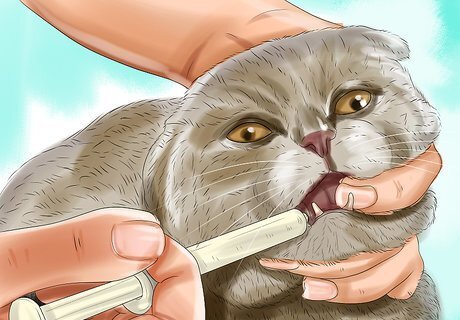
Make your cat vomit if instructed to. You will need a 3% solution of hydrogen peroxide (do NOT use the more concentrated hydrogen peroxide supplied with some hair perms or dyes) and a teaspoon or child’s dosing syringe. You will find it easier to syringe peroxide, rather than spoon it into her mouth. Here's what you should know: The dose of 3% hydrogen peroxide is 5 ml (one teaspoon) per 5 lb body weight, by mouth. An average cat weighs around 10 lb, so you will need about 10 ml (two teaspoons worth.) Repeat this every ten minutes, for a maximum of three doses. To dose the cat, hold her securely and gently insert the syringe into the cat’s mouth, behind the upper fangs. Depress the plunger, dribbling about of ml at a time onto the cat’s tongue. Give her time to swallow each time and never shoot the full amount in quickly since you may flood her mouth and then she will inhale the peroxide into her lungs.
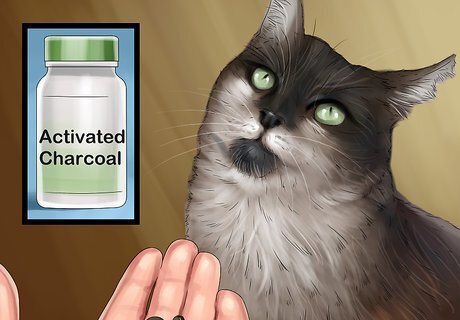
Use activated charcoal. After vomiting, your aim is now to reduce the absorption of poison that has passed further down into the intestine. For this you need activated charcoal. The dose is 1 gram of dry powder for every 1 lb bodyweight of the cat. An average-sized cat will require around 10 grams. Dissolve the powder in the smallest volume of water possible, to form a thick slurry, and syringe it into the cat’s mouth. Repeat this dose every 2 to 3 hours, for 4 doses.
Tending to Your Cat
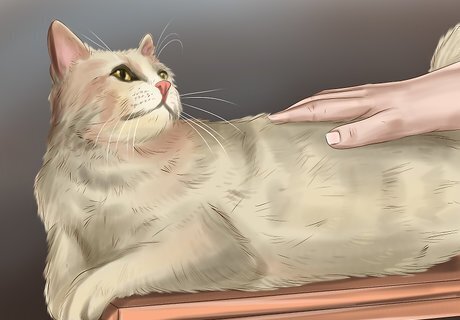
Check her coat for contamination. If there is poison on her coat, when the cat grooms herself she will swallow it and risk further toxicity. If the contaminant is a powder, brush it off. If it is sticky, such as tar or oil, you may need to use a specialist hand-cleansing product such as Swarfega Hand Cleaner (as used by motor mechanics) worked into the fur. Bathe the cat in lukewarm water for 10 minutes to remove all residue, and then rinse well with water. As a last resort, you may wish to cut off the worst affected hair with scissors or clippers. Better safe than sorry!
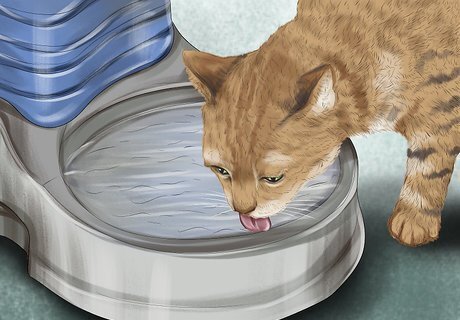
Get her to drink water. Many poisons are harmful to the liver, kidneys, or both. To reduce the risk of organ damage from poison already absorbed, ensure the cat drinks freely. If she will not drink spontaneously, then syringe water into her mouth. Slowly dribble it in one ml at a time and be sure to let her swallow. An average cat requires 250 ml of water a day, so don’t be afraid to refill that dosing syringe lots of times!

Collect a sample of the suspected poison. Include all labels, packaging, and bottles, so that all information can be relayed to a veterinarian or a Pet Poison Control Hotline. Your efforts may help future cat owners (and cats!) in similar predicaments.
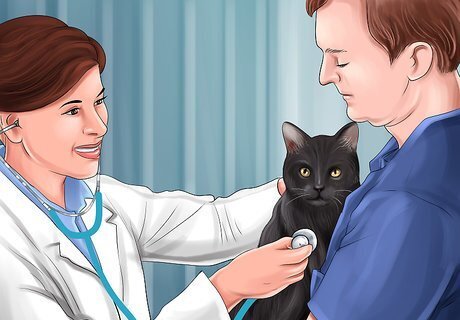
Take your cat to the vet. Your cat needs to be checked out by a vet to make sure that it's okay. The vet can make sure that you got all of the poison, and that there are no long-term issues to be concerned about.

















Comments
0 comment